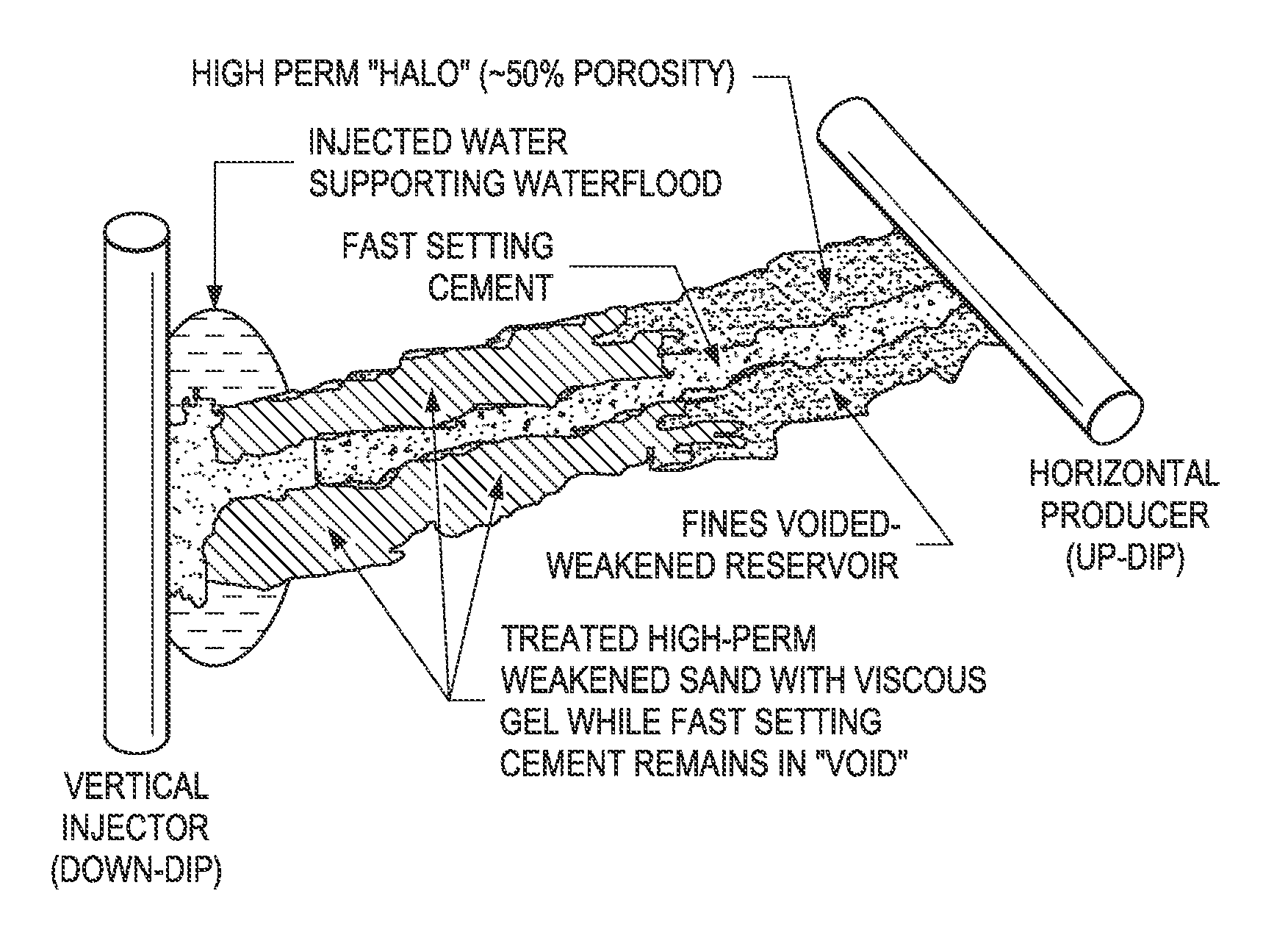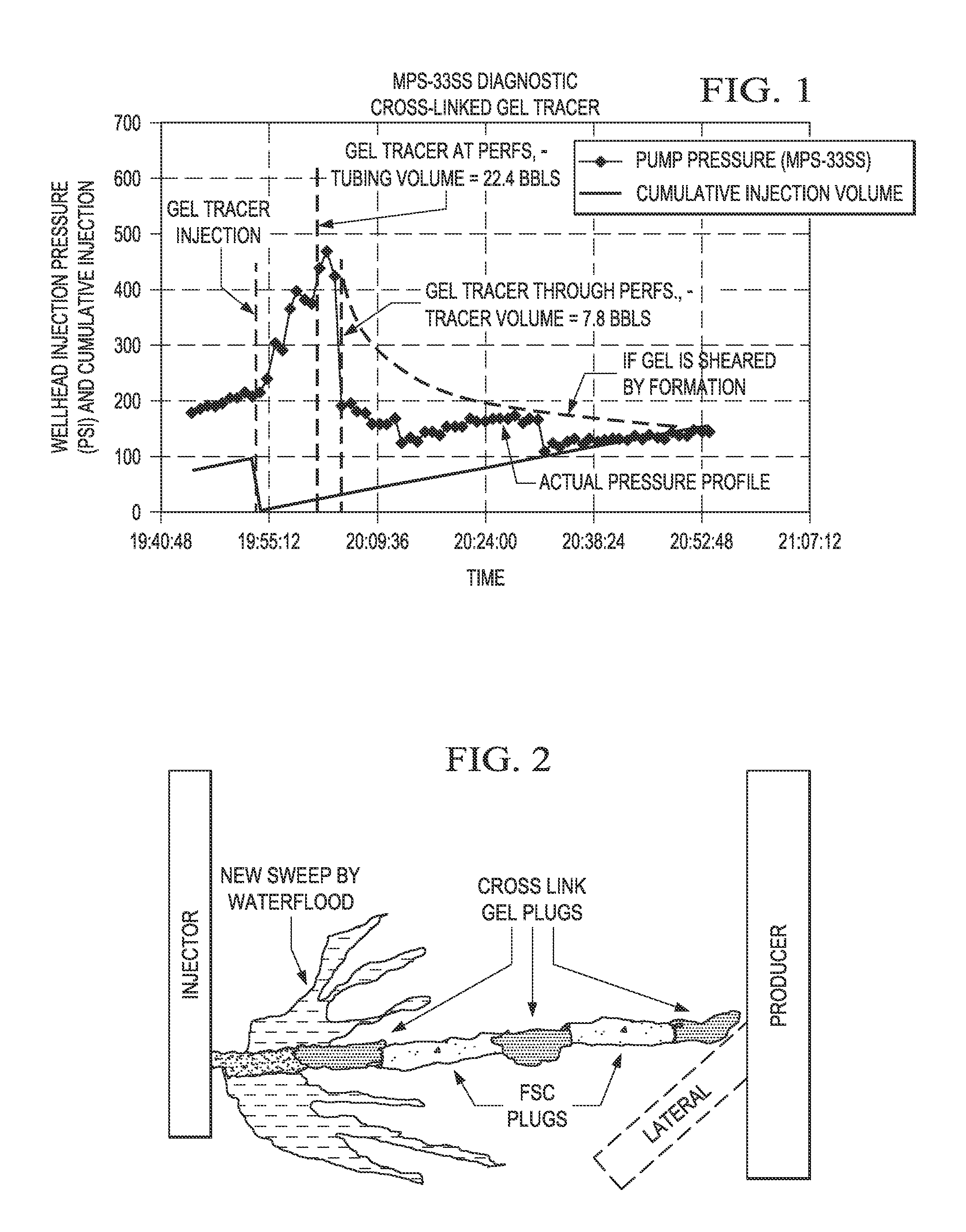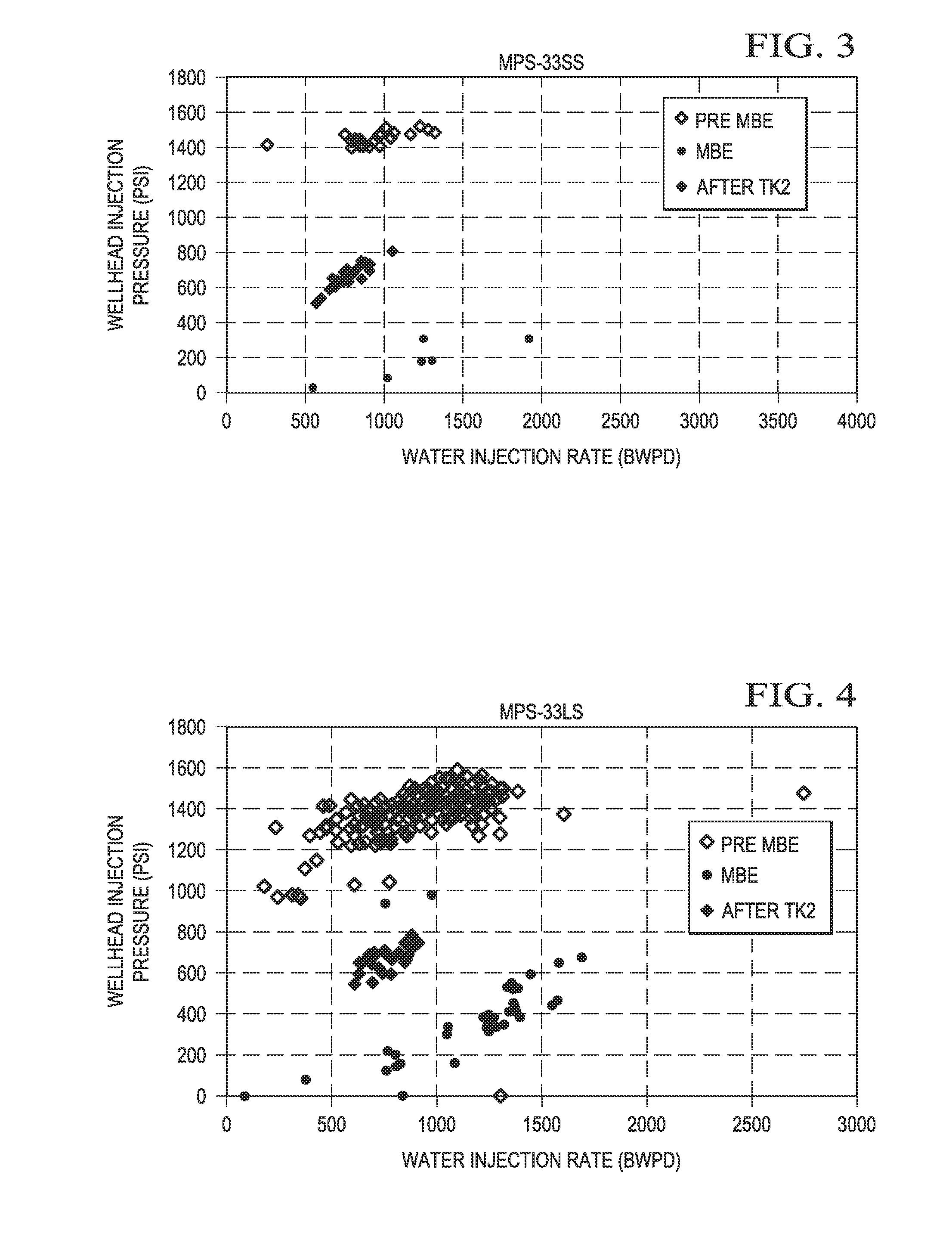Method to Control Driving Fluid Breakthrough During Production of Hydrocarbons from a Subterranean Reservoir
a technology of hydrocarbons and hydrocarbons, which is applied in the direction of sealing/packing, well accessories, ceramics, etc., can solve the problems of increasing water oil ratio, reducing oil production, and increasing the difficulty of reducing so as to reduce the flow rate of water communication
- Summary
- Abstract
- Description
- Claims
- Application Information
AI Technical Summary
Benefits of technology
Problems solved by technology
Method used
Image
Examples
example
Remediation of High Permeability Zone Using Combined Cement and Gel Treatments
[0084]The procedure of the Comparative Example is substantially repeated to place the cement plugs into the void space of the high permeability zones within the two injector and producer well pairs. After treatment, the cement plugs are placed into the zone substantially as depicted in FIG. 2. It is believed that this step essentially plugs pressure communication between the injection wells and production wells through the void space of the zone.
[0085]While placement of the cement plugs results in some success, pressure communication between the injector and producer pairs appears again after a relatively short period of 39 and 50 days respectively for the two well pairs, as previously indicated in the Comparative Example. A red dye tracer test is again run on the injector and producer well pairs, together with pressure interference testing, which confirms the presence of what is believed to be an associat...
PUM
| Property | Measurement | Unit |
|---|---|---|
| Percent by mass | aaaaa | aaaaa |
| Percent by mass | aaaaa | aaaaa |
| Viscosity | aaaaa | aaaaa |
Abstract
Description
Claims
Application Information
 Login to View More
Login to View More - R&D
- Intellectual Property
- Life Sciences
- Materials
- Tech Scout
- Unparalleled Data Quality
- Higher Quality Content
- 60% Fewer Hallucinations
Browse by: Latest US Patents, China's latest patents, Technical Efficacy Thesaurus, Application Domain, Technology Topic, Popular Technical Reports.
© 2025 PatSnap. All rights reserved.Legal|Privacy policy|Modern Slavery Act Transparency Statement|Sitemap|About US| Contact US: help@patsnap.com



